
Definition of a flexible PCB
Flexible PCBs, also known as FPCs or flex circuits, are a special type of printed circuit board that can be bent and flexed. They are made with a flexible substrate material, such as polyimide (PI) or polyester (PET), instead of the rigid FR4 substrate used in traditional PCBs. This makes them ideal for applications where space is limited or where the circuit needs to be able to move or bend.
Flexible PCBs are constructed in a similar way to traditional PCBs, but with some additional steps to ensure that they can withstand repeated bending and flexing. The copper traces and components are bonded to the substrate material using a special adhesive, and the entire circuit is then protected with a coverlay film.
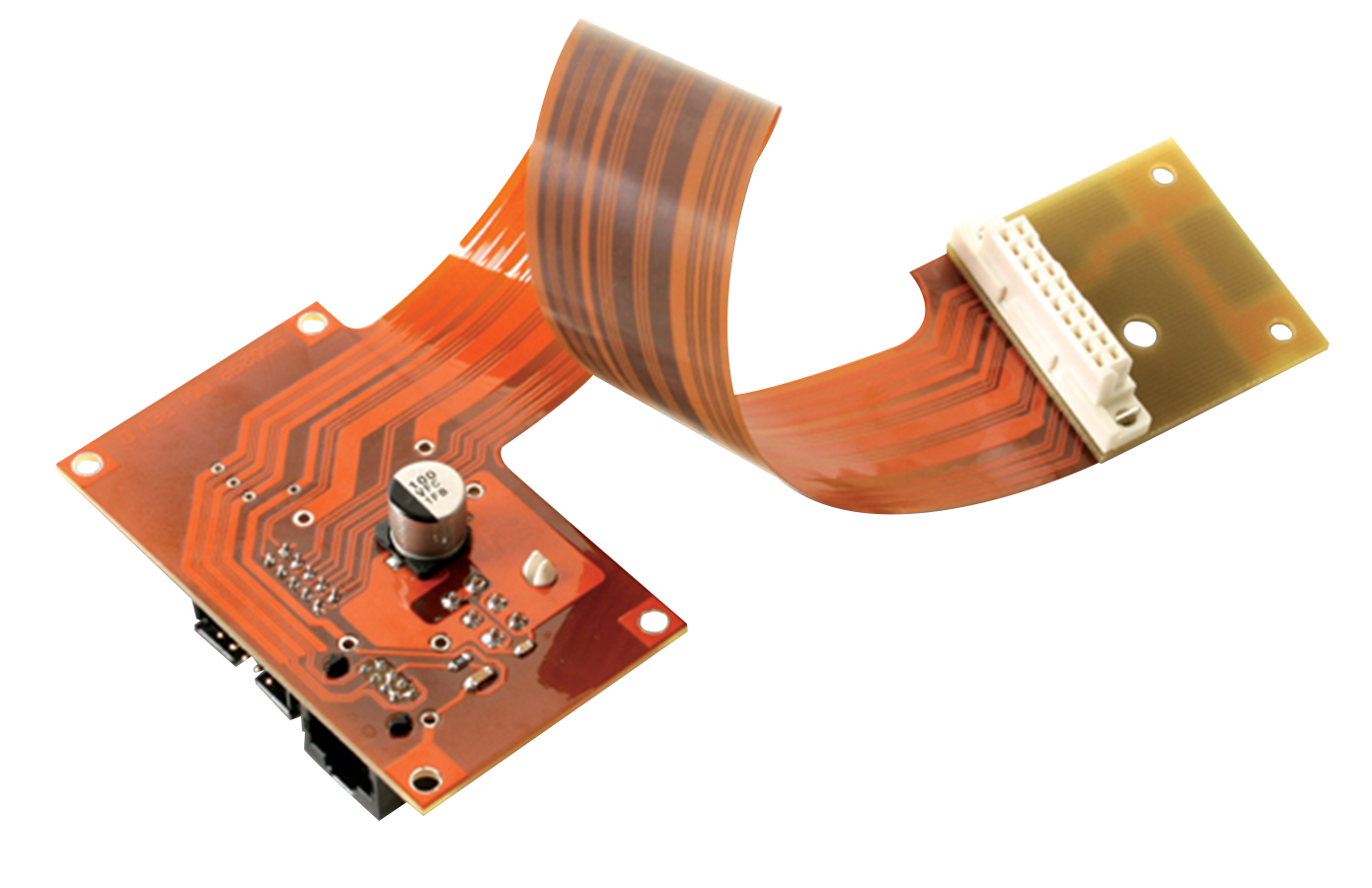
Type of flexible PCB
Single-sided flex PCBs are the most cost-effective and easiest to fabricate type of flex PCB. However, they are also the least flexible type of flex PCB and can only be used to create relatively simple circuits.
Double-sided flex PCBs are more expensive and difficult to fabricate than single-sided flex PCBs, but they are also more flexible and can be used to create more complex circuits.
Multi-layer flex PCBs are the most expensive and difficult to fabricate type of flex PCB, but they are also the most flexible and can be used to create the most complex circuits.
Rigid flex PCBs are more expensive than FR4 PCBs or all-flex PCBs, but they offer a good combination of flexibility and rigidity. They are ideal for applications where a circuit needs to be able to bend and flex, but also needs to maintain some rigidity.
All-flex PCBs are the most flexible type of flex PCB, but they are also the most difficult to fabricate. They are ideal for applications where maximum flexibility is required.
Benefits of using flexible PCBs
Enhanced design flexibility: Flexible PCBs can be bent and flexed, allowing engineers to create complex circuits in three dimensions and to package them in tight spaces. This is not possible with rigid PCBs, which are limited to two dimensions. This increased design flexibility can lead to a number of benefits, including:
Smaller and lighter devices: Flexible PCBs can be used to create smaller and lighter devices, such as wearable devices and smartphones. This is because flexible PCBs can be folded and contoured to fit into tight spaces, eliminating the need for bulky connectors and cables.
More complex and innovative designs: Flexible PCBs can be used to create more complex and innovative designs than would be possible with rigid PCBs. For example, flexible PCBs can be used to create curved displays, foldable devices, and implantable devices.
Improved performance: Flexible PCBs can help to improve the performance of electronic devices in a number of ways:
Reduced weight and size: As mentioned above, flexible PCBs can help to reduce the weight and size of electronic devices. This can lead to improved battery life and portability.
Improved heat dissipation: Flexible PCBs can help to improve the heat dissipation of electronic devices. This is because flexible PCBs can be folded and contoured to increase the surface area of the circuit board, which allows heat to dissipate more easily.
Reduced EMI interference: Flexible PCBs can help to reduce EMI interference. This is because flexible PCBs can be used to create shielded enclosures for electronic circuits.
Increased reliability: Flexible PCBs are designed to withstand repeated bending and flexing, making them ideal for harsh environments. They are also less susceptible to damage from vibration and shock than rigid PCBs. This increased reliability can be important for applications in industries such as automotive, aerospace, and medical.
Reduced assembly costs: Flexible PCBs can eliminate the need for connectors and cables, which can reduce assembly costs and improve reliability.
In addition to the general benefits listed above, flexible PCBs also offer some specific benefits for specific applications:
Wearable devices: Flexible PCBs are essential for wearable devices, as they allow them to be comfortable to wear and to conform to the body's movements. For example, flexible PCBs are used in smartwatches, fitness trackers, and medical implants.
Consumer electronics: Flexible PCBs are used in a wide range of consumer electronics products, such as smartphones, tablets, and laptops. They allow for thinner and lighter devices with more features. For example, flexible PCBs are used in the foldable displays of smartphones and tablets, and in the thin and light laptops that are popular today.
Automotive applications: Flexible PCBs are used in automotive applications such as airbags, dashboards, and lighting systems. They allow for complex shapes and designs that would not be possible with rigid PCBs. For example, flexible PCBs are used in the airbags to create complex shapes that can protect the occupants of the vehicle in a crash.
Medical devices: Flexible PCBs are used in a variety of medical devices, such as pacemakers, insulin pumps, and surgical robots. They allow for implantable devices and devices that need to be able to move and bend. For example, flexible PCBs are used in pacemakers to create implantable devices that can regulate the heartbeat.
Industrial applications: Flexible PCBs are used in industrial applications such as robotics, automation, and sensors. They allow for flexible and durable circuits that can withstand harsh environments. For example, flexible PCBs are used in robots to create flexible arms that can move and bend in complex ways.
Comparison of Flexible and Rigid PCBs
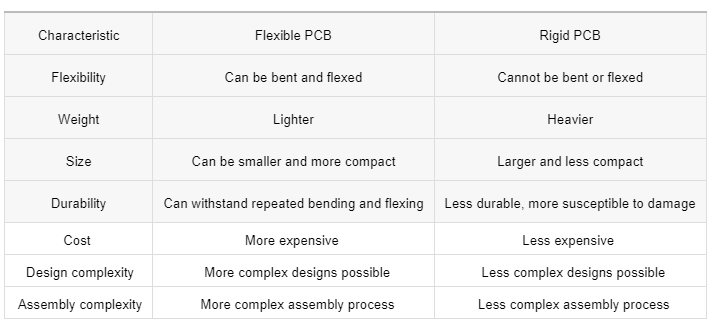
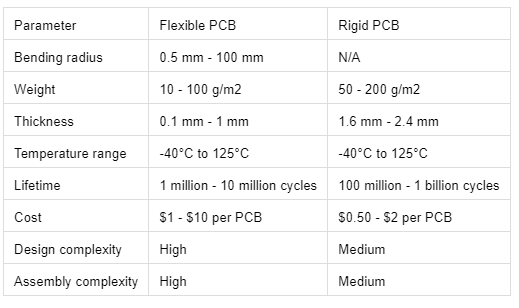
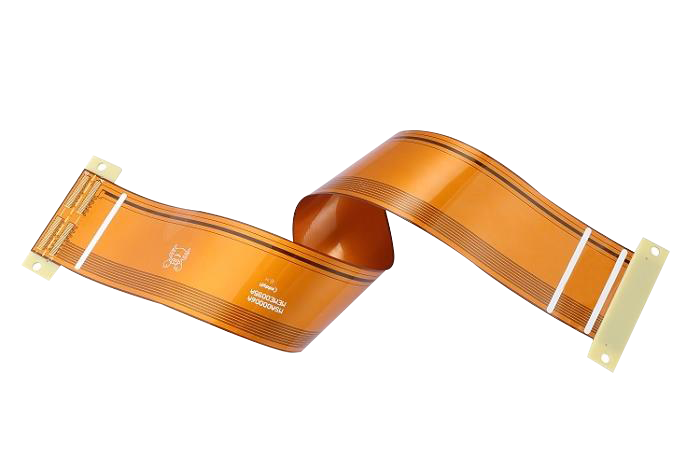
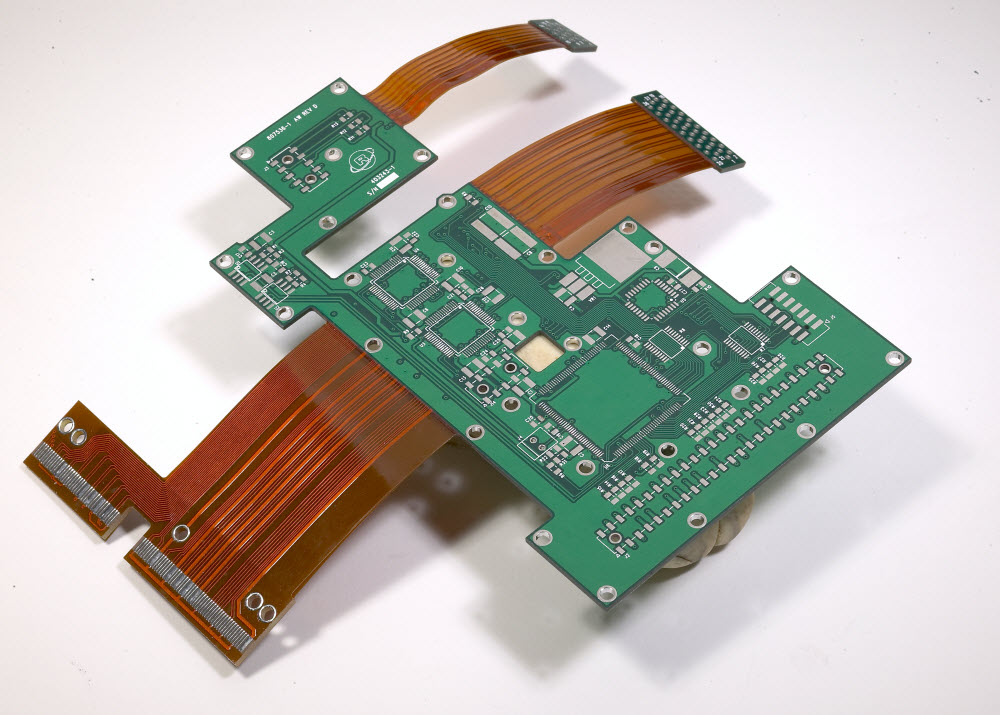
Applications of Flexible PCBs
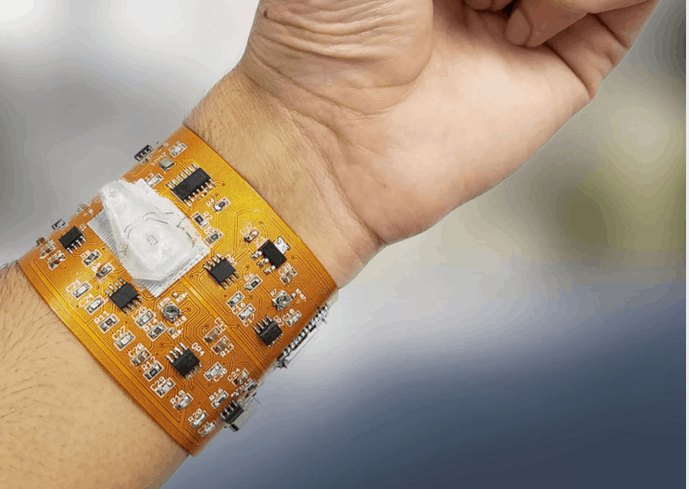
Wearable devices:
Smartwatches: Flexible PCBs are used in smartwatches to create thin and flexible devices that can be worn comfortably on the wrist. Smartwatches typically have a variety of sensors, such as heart rate monitors, accelerometers, and GPS receivers. These sensors are connected to the smartwatch's circuit board using flexible PCBs.
Fitness trackers: Fitness trackers are similar to smartwatches, but they are typically focused on tracking the wearer's activity levels. Fitness trackers typically have simpler circuits than smartwatches, but they still require flexible PCBs to connect the various components.
Medical implants: Flexible PCBs are used in a variety of medical implants, such as pacemakers, insulin pumps, and cochlear implants. Medical implants need to be small and lightweight, and they need to be able to conform to the body's movements. Flexible PCBs are ideal for these applications because they are thin, flexible, and durable.
Consumer electronics:
Foldable smartphones: Flexible PCBs are used in the foldable displays of foldable smartphones. Foldable smartphones are a new type of smartphone that has a display that can be folded in half. This allows the phone to be smaller and more compact when it is not in use. Flexible PCBs are necessary for foldable smartphones because they allow the display to be folded without damaging the circuit.
Thin and light laptops: Thin and light laptops are becoming increasingly popular. These laptops are typically less than 1 inch thick and weigh less than 3 pounds. Flexible PCBs are used in thin and light laptops to reduce the weight and size of the device. Flexible PCBs can be used to create thinner and lighter circuit boards, and they can also be used to connect the various components in a more efficient way.
Automotive applications:
Airbags: Flexible PCBs are used in airbags to create complex shapes that can protect the occupants of the vehicle in a crash. Airbags need to be able to deploy quickly and reliably, even in the event of a high-speed collision. Flexible PCBs allow for the creation of airbags that are both complex and durable.
Dashboards: Flexible PCBs are used in dashboards to create complex shapes and designs. Dashboards have a variety of electronic components, such as displays, switches, and sensors. Flexible PCBs allow for the creation of dashboards that are both aesthetically pleasing and functional.
Lighting systems: Flexible PCBs are used in lighting systems to create thin and flexible light panels. Flexible light panels can be used in a variety of applications, such as car headlights, tail lights, and interior lighting.
Medical devices:
Pacemakers: Pacemakers are implantable devices that regulate the heartbeat. Pacemakers need to be small and lightweight, and they need to be able to conform to the body's movements. Flexible PCBs are ideal for these applications because they are thin, flexible, and durable.
Insulin pumps: Insulin pumps are implantable devices that deliver insulin to the body. Insulin pumps need to be small and lightweight, and they need to be able to conform to the body's movements. Flexible PCBs are ideal for these applications because they are thin, flexible, and durable.
Surgical robots: Surgical robots are used to perform complex surgeries. Surgical robots have a number of robotic arms that are controlled by a surgeon. Flexible PCBs are used in surgical robots to create robotic arms that are flexible and can move in complex ways.
Industrial applications:
Robots: Flexible PCBs are used in robots to create flexible arms and other components. Robots are used in a variety of industrial applications, such as manufacturing, assembly, and logistics. Flexible PCBs allow for the creation of robots that are more agile and versatile.
Automation: Flexible PCBs are used in automation equipment to create circuits that can withstand movement and vibration. Automation equipment is used in a variety of industries, such as manufacturing and logistics. Flexible PCBs allow for the creation of automation equipment that is more reliable and durable.
Sensors: Flexible PCBs are used in sensors to create sensors that can be attached to curved surfaces. Sensors are used in a variety of industries, such as manufacturing, healthcare, and transportation. Flexible PCBs allow for the creation of sensors that can be used in a wider range of applications.
Flexible PCBs are a versatile and innovative technology that is used in a wide range of applications. They offer a number of advantages over traditional rigid PCBs, including flexibility, weight savings, space savings, and durability. However, flexible PCBs are also more expensive and more complex to design and assemble.FPCs are well-suited for applications where a rigid PCB would not be feasible, such as wearable devices, foldable smartphones, and implantable medical devices. They are also used in applications where weight and size are important, such as consumer electronics and automotive applications.
As technology continues to evolve, flexible PCBs are likely to become even more acceptable for product designing.
- Comments(13)
**
May 17.2024, 16:42:46
h****gir
May 14.2024, 18:00:25
**
May 01.2024, 08:46:14
**
Apr 09.2024, 10:32:43
Thank you for providing such useful information. I've been having trouble coming up with many questions about this topic mapquest driving directions. I'll stick with you!
u****ing
Mar 18.2024, 15:33:10
**
Feb 16.2024, 18:27:01
**
Feb 09.2024, 22:30:10
**
Feb 09.2024, 22:29:32
first time i know about flexible PCB i really like it
**
Feb 09.2024, 22:27:30
first time i know about flexible PCB i really like it
<a href="https://festivalnews24.com/">festivalnews</a>
p****uer
Jan 23.2024, 16:03:40
The flexible PCB used in smartwatches to create thin and flexible devices that can be worn comfortably on the wrist is the smartest invention I have ever seen. it's really helpful a lot for me
**
Jan 05.2024, 15:14:40
P****ton
Dec 26.2023, 10:47:59
**
Dec 07.2023, 23:22:23
